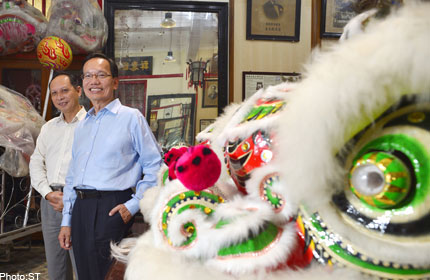
Kong Chow, or Gangzhou in hanyu pinyin, is the ancient name for the district of Xinhui in China's Guangdong province - the ancestral home of those who founded the Kong Chow Wui Koon in Singapore.
Cantonese-speaking immigrants from the southern province set up the clan association in 1840, the year the first Sino-British Opium War broke out.
The association started out in rented premises at what used to be Upper Chin Chew Street in Chinatown. It later built its own four-storey building at New Bridge Road and was opened officially in 1924.
It also started the Kong Chow School in 1929 to provide free education to the poor. The school closed in 1968 because of dwindling enrolment. By then, the Government had taken full responsibility for educating the population.
The association's founders were strong supporters of two other institutions that catered mainly to the Cantonese community - Kwong Wai Shiu Hospital and Peck San Theng, a Chinese cemetery that later became a columbarium, located in what is now Bishan.
The Cantonese are the third-largest ethnic Chinese group in Singapore after the Hokkiens and Teochews.
Today, the Kong Chow Wui Koon is among more than 200 Chinese clan associations here. It has 550 members, and its youth group is about 200 strong.
The association is well-known for its Cantonese opera and singing classes, as well as its gongfu and lion dance troupe.

It started an acrobatic cycling troupe in 1957, which performed regularly at major events such as the National Day and Chingay parades until the early 1980s.
The troupe was disbanded in the early 1990s as few new members could be recruited to carry on performing the stunts.

Get a copy of The Straits Times or go to straitstimes.com for more stories.

